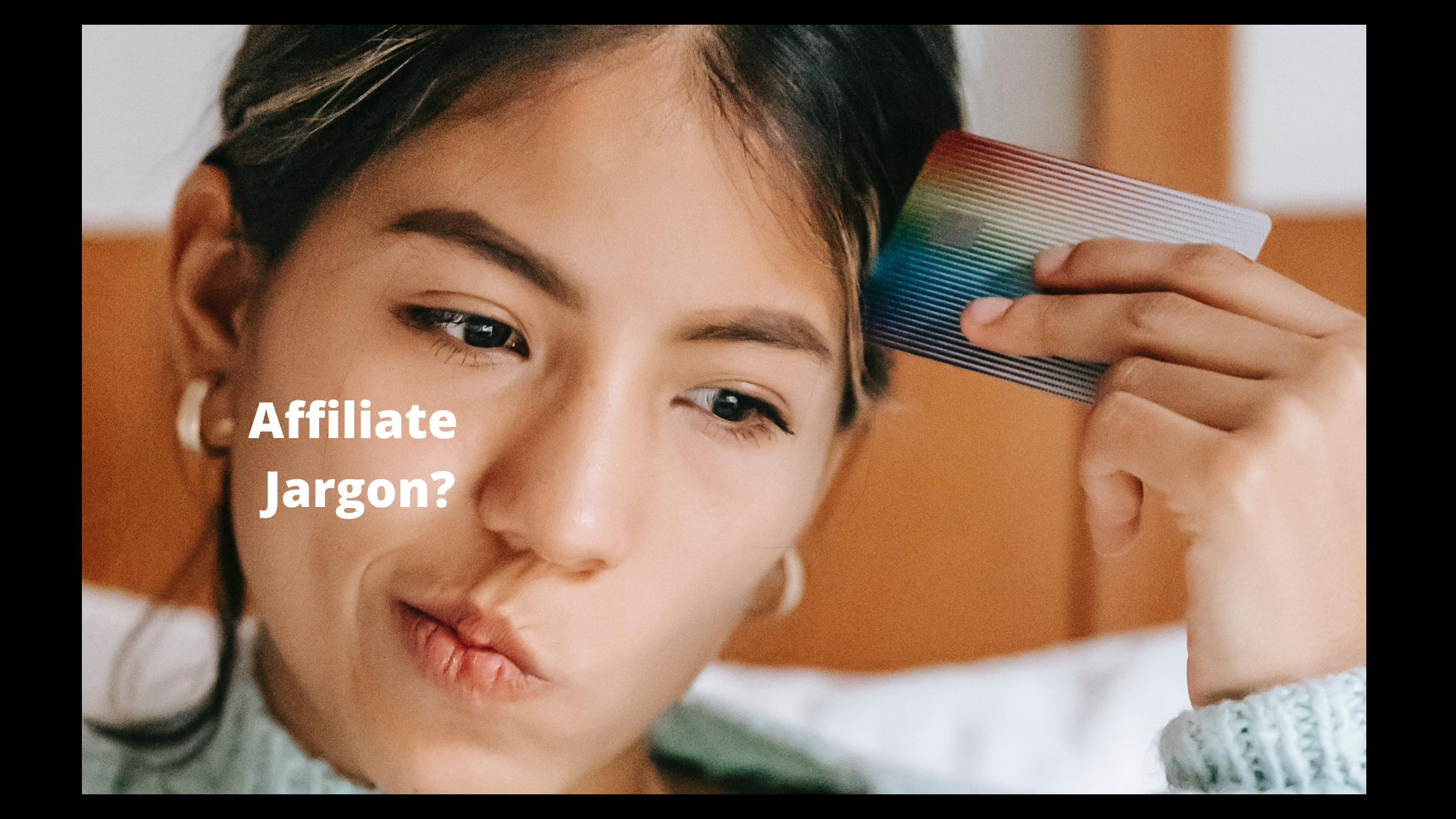Affiliate Marketing Jargon & Terms You Need to Know / (Best Affiliate Marketing Glossary Terms)
Welcome to the wonderful world of affiliate marketing! Here you can find all sorts of fun and weird
terms and jargon that will have you scratching your head.
From CPA to PPC, it’s a whole new
language with its own vocabulary.
So strap yourself in, because we’re about to take an entertaining
journey into the wacky world of affiliate marketing terminology!
Understanding affiliate marketing jargon
Learn to use the jargon and terms in this article, and to do affiliate marketing the right way >>>start for free<<<
Advertiser:
- A company or individual that pays for an advertisement to be placed on a website.
Banner Ads:
- Graphical advertisements displayed within webpages.
Click-Through Rate (CTR):
- The percentage of people who click the banner ad after seeing it.
Commission:
- Money is paid by an advertiser to a publisher when their ads are clicked or converted into sales.
Conversion Rate (CR):
- The percentage of people who complete the desired action, such as making a purchase, after clicking on an ad or link.
Cost Per Action (CPA):
- An affiliate marketing model where advertisers pay affiliates based on each completed sale or lead generated from their referred traffic.
Learn to use the jargon and terms in this article, and to do affiliate marketing the right way >>>start for free<<<
Deep Linking:
- The practice of directing users directly to specific pages within a website rather than just its home page.
Impression :
- A single view of an online advertisement; one impression is counted each time an ad is seen by someone online regardless if they interacted with it in any way.
Link Cloaking :
- Hiding the true destination URL behind another URL in order to keep track of clicks and commissions more easily.
Payment Thresholds :
- Set minimum amounts that must be earned before payments can be made out to affiliates.
Revenue Sharing :
- An arrangement between publishers and advertisers where revenue is shared proportionally based on performance metrics such as impressions, clicks, and sales.
Search Engine Optimization (SEO) :
- Techniques used to increase visibility in search engine results in pages through keyword research, content optimization, and other tactics designed to improve rankings and drive organic traffic.
Sub Affiliates / 2nd Tier Affiliate Programmes :
- When existing affiliates recruit new members into the program under them for additional commission rewards.
Learn to use the jargon and terms in this article, and to do affiliate marketing the right way >>>start for free<<<
Tracking Links/Cookies/Pixels:
- Unique links assigned by advertisers allow tracking activity back from customers so commissions can be awarded accordingly.
Unique Visitor / User Counts :
- The number of individual visitors per day is tracked via cookies allows you to measure success rates over time against different campaigns and sources.
Whitelisting/Blacklisting IP Addresses & Domains:
- Whitelisting allows only certain domains access while blacklisting denies access altogether depending upon your preferences.
XML Feeds & Datafeeds:
- Structured data feeds containing product information including descriptions, titles, images, etc., updated regularly via FTP servers which syndicate content across multiple platforms.
Zones & Placements Targeting:
- Areas designated for displaying ads at specific locations throughout a site are either manually chosen or automated using algorithms.
CPC(Cost Per Click) Model:
- The payout structure is based solely on how many times visitors click through from advertising banners without necessarily converting into sales.
CPM(Cost Per Mille)Model:
- The payout structure is based on the number of impressions served up irrespective of whether there were any interactions with the campaign itself.
Cross-Device Tracing:
- Ability to trace user behavior across multiple devices like desktop computers smartphones tablets etc., so better targeting strategies could be implemented resulting in higher conversions.
Fraud Prevention Tools :
- Software solutions employed check validity clicks coming through detecting malicious activities and preventing financial loss due to fraudsters.
Upsell Strategies :
- Ways to increase profits associated with promotions offering related products and services during the checkout process encouraging customers to buy even more.
Retargeting Campaigns :
- Utilizing customer data to build customized targeted campaigns aimed at those already shown interest brand aims to bring them back purchase items missed out the first time round.
Split Testing:
- Technique testing two versions same thing example two slightly different headlines see what works best then measuring the result to determine the most effective version to go forward.
Referral Programs :
- Incentives given encourage existing customers to refer friends and family reward points discounts for future purchases thus increasing overall ROI.
Well, there you have it! If you want to stay ahead of the curve in affiliate marketing and make sure that your online business is successful, understanding the jargon and terms associated with this industry is essential.
It can help ensure that you are making informed decisions when working with partners or clients, as well as providing a better understanding of how the process works so that you can maximize your profits.
With a little bit of effort and research, mastering affiliate marketing lingo will be easier than ever before!

